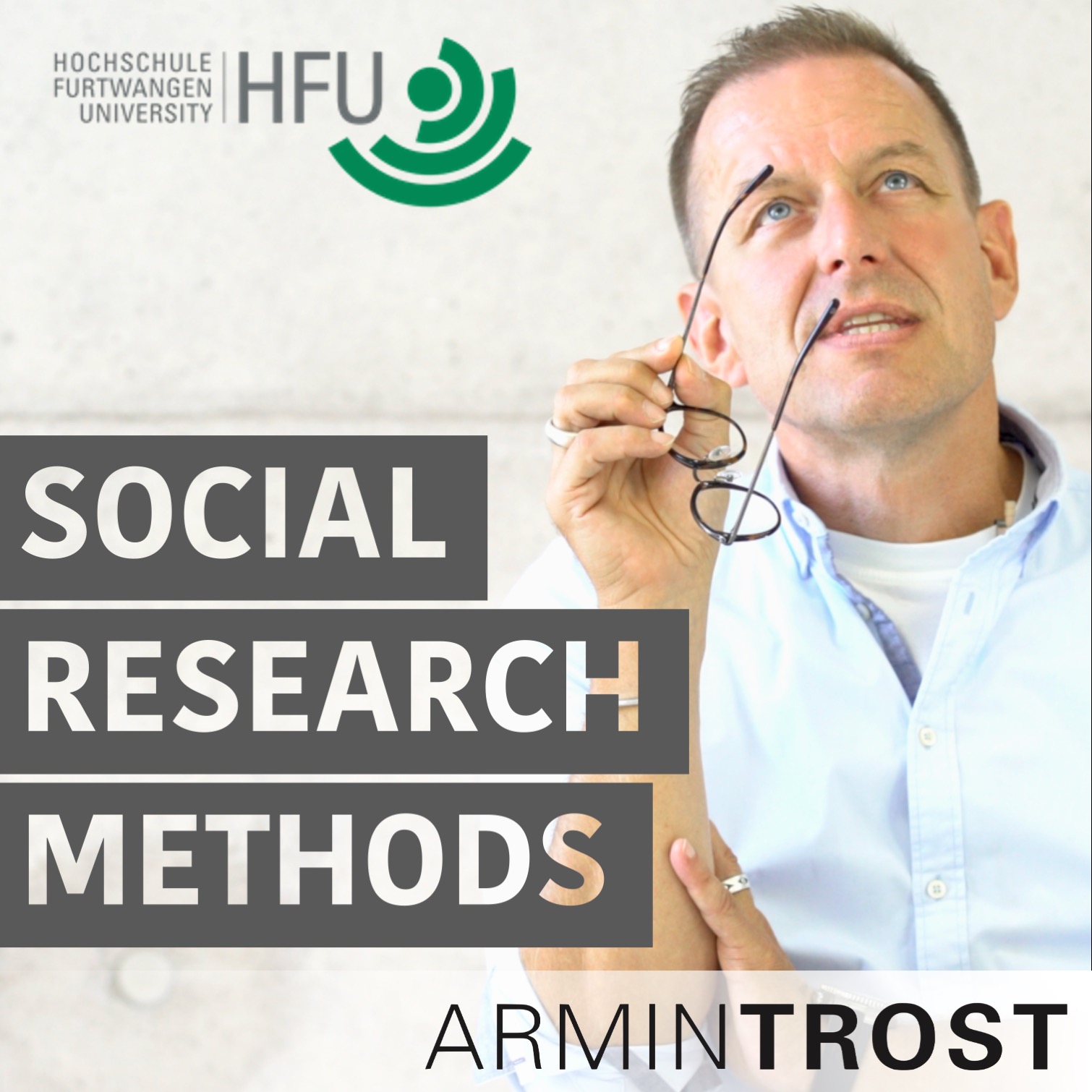Episodes
Writing a thesis is often a challenging and complex enterprise. This episode helps you to understand what will go on inside you and between you and your supervisor.
All slides to the entire series can be downloaded for free here: https://armintrost.de/en/professor/digital/social-research-methods/
Published 12/09/21
Published 12/09/21
Writing an academic report or article mainly follows a specific structure, format and style since academic papers differ from all other media most people are familiar with (e.g. news-paper article)
Published 12/20/20
Multidimensional scaling is a statistical procedure to translate distances and dissimilarities into a visual representation. In social science it is used to visualize social relations among people and groups
Published 12/02/20
We use multiple regression analysis to determine the relation between many (multiple) independent variables and one single dependent variable
Published 12/02/20
Factor analysis reduces complexity of data by extracting a few factors. It delivers underlying coordinates in an otherwise complicated set of variables. We use factor analysis for instance to understand the basic independent dimensions of personality
Published 12/02/20
We use variance analysis (ANOVA) to compare variance within and between groups. It is a method to test hypothesis that is in particular suitable for experimental designs. Once there are more than one independent variables we name this MANOVA
Published 12/01/20
In social science we estimate the probability of the null hypothesis being wrong even though it might be true. Should we reject or accept the null hypothesis over the alternative hypothesis? This is an essential idea in inferential statistics
Published 12/01/20
While we know the mean and standard deviation of our sample we don’t know the real ones. That’s why we estimate. There is a reason, why using n-1 instead of N when estimating standard deviation of the population based on a sample.
Published 12/01/20
With z transformation you can transform any kind of variable into a variable that has a mean of 0 and a standard deviation of 1. By doing so, variables become comparable. It’s an essential idea when it comes to inferential statistics.
Published 12/01/20
Bivariate statistics help to understand the statistical relation between the independent and the dependent variable. Once you test a hypothesis you always need this kind of statistics.
Published 10/26/20
Descriptive statistics involves methods, that describe the central tendency and dispersion of data. In most practical cases they relate to single (univariate) variables.
Published 10/26/20
Data can vary in their nature. We differentiate between different levels. They could be either nominal, ordinal, interval or on ratio level. This really matters with regards to the statistical method you want you use.
Published 10/26/20
You always run your study based on a subset of the entire population, you intent to generalize on. External validity refers to the extent to which you really could do so. This in turn depends on the sampling methods you where using.
Published 10/26/20
Good research designs lead to a high internal validity. A study is internally valid when you really can assume the independent variable effects the dependent variable. Often you cannot.
Published 10/26/20
Research design relates to the architecture of your study. One major aspect is, whether you manipulate or just measure the independent variable.
Published 06/23/20
In systematic observation you observe people. Very often the subjects are not aware of the fact that they are being observed. Content analysis is about the consideration of existing material.
Published 06/16/20
Responding to questions is a complex process in psychological terms. Once you understand how people respond to questions you’ll see what to consider when creating questions.
Published 06/16/20
Creating a good survey is difficult. There is a clear roadmap on how you’d better do it. It involves various steps like defining the scope and related criteria. One essential step must be a pre-test.
Published 05/18/20
There are three criteria, which tell you something about the quality of your measurement. They are validity, reliability and objectivity. When estimating these criteria, you always use statistical correlation.
Published 05/18/20
In social science we often test variables. Think for instance of intelligence, personality and others. Testing is based on the classical test theory.
Published 05/18/20
In social science we need TO measure variables. Those variables relate to theoretical concepts, which we can’t see. They are intangible and we do not even know whether or not they really exist. Measurement is always based on certain assumptions, which might be wrong.
Published 05/18/20
Defining the research question and hypothesis is always a crucial start in every scientific research unless your research is about creating new hypotheses.
Published 05/15/20
Human beings by nature are not fully capable of seeing the truth as it is. That’s why we need scientific research. Scientific research is objective, systematic, repeatable, generalizing and always based on theories.
Published 05/15/20
In public media you’ll find many evidences proposing various simple causes and effects. Things are not that easy. To run serious social science is difficult and you better question the evidences that cross your way
Published 05/15/20


